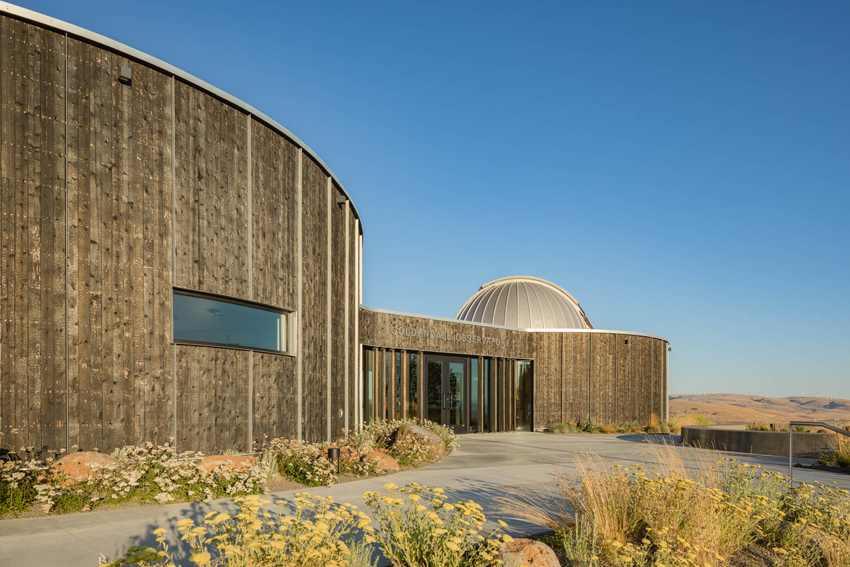The Future is BIM
 1 AIA LU/Elective; 0.1 ICC CEU; 1 IIBEC CEH; 0.1 IACET CEU*; 1 AIBD P-CE; AAA 1 Structured Learning Hour; This course can be self-reported to the AANB, as per their CE Guidelines; AAPEI 1 Structured Learning Hour; This course can be self-reported to the AIBC, as per their CE Guidelines.; MAA 1 Structured Learning Hour; This course can be self-reported to the NLAA.; This course can be self-reported to the NSAA; NWTAA 1 Structured Learning Hour; OAA 1 Learning Hour; SAA 1 Hour of Core Learning
1 AIA LU/Elective; 0.1 ICC CEU; 1 IIBEC CEH; 0.1 IACET CEU*; 1 AIBD P-CE; AAA 1 Structured Learning Hour; This course can be self-reported to the AANB, as per their CE Guidelines; AAPEI 1 Structured Learning Hour; This course can be self-reported to the AIBC, as per their CE Guidelines.; MAA 1 Structured Learning Hour; This course can be self-reported to the NLAA.; This course can be self-reported to the NSAA; NWTAA 1 Structured Learning Hour; OAA 1 Learning Hour; SAA 1 Hour of Core Learning
Learning Objectives:
- Describe how BIM software plays a role in an architecture firm’s project productivity and strategic initiatives.
- Explain how OPEN BIM leads to seamless collaboration and transparency.
- Discuss the benefits of using BIM's fluid design capabilities.
- List examples of how BIM supports virtual collaboration using digital delivery.
This course is part of the Business of Architecture Academy
WHY A BIM-BASED CLOUD SOLUTION MAKES SENSE FOR THE FUTURE OF OFFICE WORK
The recent COVID-19 pandemic has created some serious shifts in the workplace, as businesses and organizations needed to adjust their approaches to workflow. Meetings could happen fairly easily in virtual settings, but having to reconfigure collaborative projects has been a challenge for most industries, including within the AEC world. Still, working remotely has shown some major benefits for companies and their employees, as it provides flexible work spaces that do not tie people to one particular location.
The necessity of remote work in a pandemic has driven innovation with a focus on cloud-based integrated design workflow technologies. This section will discuss some of the technical aspects of cloud-based BIM that help facilitate secure, real-time sharing and collaboration between project team members regardless of the size or complexity of the project, the location of offices, or the speed of the internet connection.

A cloud-based BIM experience is often a more visual and intuitive experience for everyone that allows for more fulfilling teamwork, ultimately leading to more creative designs.

Cloud-based BIM allows projects to progress unhindered by time zones, city lines, and country borders.
What Is the Cloud?
It is fair to say that “the cloud” is a concept that many of us understand in a general sense, but when trying to explain it in detail, it feels aptly elusive. And yet it is one of the most prominent aspects of our technology landscape right now because so much of our lives rely on it, including all media-sharing services, banking apps, and webmail clients. It allows businesses and organizations to run programs and applications through the internet, saving time, space, and money. Instead of buying up equipment for processing and storage, you can use the cloud and pay as you go according to what you need. Its flexibility is a major part of its appeal.
The cloud exists in data centers—which are a collection of networked computer hardware—that are accessed by companies and organizations through the internet. What makes it such a powerful technology is that millions of people can interact with the exact same bit of information simultaneously. It can be private or public. It can store photos, email, music, and calendar, all of which can be synced from the cloud to all of your devices so that you can instantaneously access calendar information or musical playlists.
The cloud can be used to store data and share files. It also can be used for remote computing, in which people can share processing, software, and other resources. This allows users to work without having to deal with constant software updates and maintenance.
BIM in the Cloud
It is probably clear by now why it makes sense to have a cloud-based BIM solution, especially in a remote working environment. For the AEC industry, it allows for secure, real-time sharing that is as fast and efficient as it would be if you were in the office. Combined with an open BIM platform that supports and hosts multiple file formats and tools that provide file-exchange solutions, it is a powerful way to design and deliver projects.
Cloud-based BIM’s pay-as-you-go aspect is appealing to companies. They can subscribe or unsubscribe to various cloud storage options and choose from licensing options without purchasing expensive servers. Complex models can be loaded and viewed at high speed through web browsers into a common format, which makes for scalable solutions with projects of any size. Data being stored elsewhere sounds tricky in terms of security, but it is often more secure than data stored in office equipment. At the same time, the data can be accessed more easily by those who are given permission, making it both flexible and secure at the same time.
Access to cloud-based projects can be given to team members, external disciplines, clients, and construction workers. These files are instantly accessible with appropriate permissions, and collaboration can happen in real time. The cloud allows teams to place, update, and manage modules, DWGs, and PDFs, track changes in real time, and maintain versioned project history for reference. Team members can publish 2-D and 3-D deliverables directly to the cloud. BIM CAD software allows designers to work with data-enhanced parametric objects that provide file-exchange solutions for merging design files from popular formats, such as Revit RVT, IFC, Bentley DGN, and BCF, and are easily integrated into cloud-based work. This integration promotes scalability by allowing multi-server layouts to be created with optional caching servers. When all stakeholders have access to the latest version of a model, it means that they are all working from a single point of reality. Everyone is on the same page, as they say.
For those who are working remotely, access to models can happen from all devices that are synched to the cloud. BIM managers working with multiple teams based in various places, construction workers working on-site, and even designers located overseas can all access and engage with the same project in real time. Issues can be resolved in real time too since feedback can be provided at any time for anyone to see. A designer can drop a pin directly on an object that needs revision and assign the work directly to the appropriate person. An event log can provide a history of comments, feedback, and changes so that anyone can go back and recall where pivots were made.
The transparency of cloud-based BIM is not just a logistical one. It offers a way for a team to feel like a team and trust the process from beginning to end. It provides accountability and also a way for more people to contribute to all phases of the project, to whatever extent that is desired. For all these reasons, a cloud-based BIM experience is often a more visual and intuitive experience for everyone that also leads to more creative and potentially more fulfilling teamwork.
The landscape of collaboration is still uncertain. Questions and concerns about how more permanent remote work situations might limit business opportunities or affect a firm’s reputation are valid. But cloud-based BIM and other remote tools are taking the stigma out of remote office work. They're proving to be not only a reliable stop-gap for pandemics but also a permanent way of working that enhances productivity and leads to better buildings.
Case Studies: The Possibilities of BIM
The potential for BIM is apparent in all kinds of built environments—from public construction to residential living in urban spaces. In some cases, such as public bids, the goal might be to keep costs low without compromising aesthetics.
In others, it might be to provide elegant details and green building elements in the first design phases, making sure that no disappointing changes need to be made when construction time comes. This section will look at how BIM has met the design goals of a variety of building types and provide case studies to illustrate its success.
Case Study: Goldendale Observatory Project
The Goldendale Observatory located in Goldendale Observatory State Park in Washington was a recent public project with complex challenges. Patano Studio, the firm that won the bid, was tasked to design a building that integrated with parts of the old observatory, whose unique geometry made the job challenging. The site—located on a mountain top—was also challenging.
The firm used Archicad, an architectural BIM CAD software, which allowed it to simplify how it shared design intent from beginning to end as well as show its progress to the public as a 3-D walkthrough. This ability to engage the public along the way helped garner public support—something that does not always happen when a new public space is built.
Using BIM tools and workflow, the company was able to create a striking building that includes an ellipse, a circle, and no straight walls, and align the old telescope room with a new interpretive space and visitor center. Public works projects require staying in tight, low-cost budgets. In the past, before utilizing BIM, the company would have likely needed to change orders, rework, and redo the design in multiple formats, losing time and money. In this case, it did not change a single order or experience conflicts among stakeholders. It could track any public work requirements as it went and respond early on. And it reported no tradeoffs in terms of design aspirations. The observatory won the AIA Seattle and Architecture Master Prize award.

Photo: Sozinho Imagery
The Goldendale Observatory located in Goldendale Observatory State Park in Washington was a recent public project with complex challenges. Using Archicad, Patano Studio was able to create a striking building with a new interpretive space and visitor center.
Case Study: Alta Roosevelt Apartment Tower
A 33-story apartment tower in the Printer’s Row section of Chicago’s South Loop sports an elegant exterior of concrete and glass. Pappageorge Haymes Partners designed the tower with residential units over two wings, leaving room for natural light to pour into the interior spaces. Tree-lined circulation paths, pocket park, and parking garage blend with the tower.
The firm used Archicad and several tools in a BIM work space. It was able to include MEP and structural engineer consultants in the BIM process, using IFC to share files across platforms and create a single IFC file for the entire project. The BIM tools helped provide real-time engagement and updates on the project with no communication hassle.
The firm was able to evaluate design lighting effects inside the building so it could see what the building looked like in the evenings. It was also able to drill down to details from the beginning, using tools such as Twinmotion, a third-party plugin with Archicad, which has a library of materials and objects that can be used to design in a 3-D model. In addition, the firm was able to aim for LEED credits, with sustainable elements such as a green roof, electric vehicle charging stations, and ENERGY STAR appliances—all visualized, analyzed, and incorporated into the initial design so that the building had a reduced-footprint goal throughout the process.











